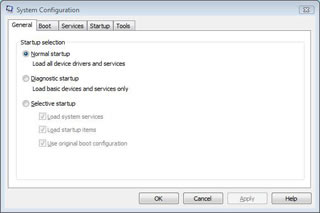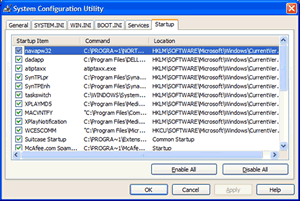
 Windows Safe Mode is a way of booting up your computer so you can run administrative and diagnostic tasks on your Windows operating system.
Windows Safe Mode is a way of booting up your computer so you can run administrative and diagnostic tasks on your Windows operating system.
When you boot into Safe Mode the Windows operating system only loads up the bare minimum of software that's required for it to work. This mode of operating is designed to let you troubleshoot and run diagnostics on your computer. Windows Safe Mode also loads just a basic video driver so your desktop and programs will look somewhat different.
For Windows 8, Windows 7, Vista, XP and Win98 there are two methods of booting into Safe Mode, while Windows 95 and 2000 only have one.
For all the versions of Windows the easiest way to get into Safe Mode is to quickly press the F8 key, sometimes repeatedly, just as your computer starts up and issues it's beep. You should then be brought to a menu where you can choose to boot into Safe Mode. Select the option for Safe Mode using the arrow keys and then press the Enter key on your keyboard to boot into this diagnostic mode.
If you first attempt does not work, reboot your computer and try again. You do have to be quick when you press the F8 key.
Note: On a computer that is configured for booting to multiple operating systems, you can press F8 when the boot menu appears and then choose the installation that you need to access using the arrow keys, and then press Enter.
When you press the Enter key you will see a message stating that you need to reboot.
Windows 95 and 2000 can only boot into Safe Mode using the F8 method whereas all the other versions of Windows can use two methods - the F8 key and the MS System Configuration Tool.
Before you access this tool it is best to close all your open programs so that you have nothing open on your Windows desktop.
Now click on the Start button then click on Search or Run, depending on your version of Windows.
In the Search or Run field type msconfig. Press your Enter key or the OK button and the System Configuration Utility will start up. You will then see a screen similar to the one below.

Once you see the main screen, click on the Boot tab (the image above is the screen you'll see if you are using Windows Vista. The screen in other Windows versions isn't that different to the Vista one).
In the Boot screen select Safe Boot and OK. You will then be asked to reboot your PC.

Once you are in Windows Safe Mode you can start to diagnose the problems you are having with your computer.
Safe Mode is a powerful tool for fixing problems in Windows. Here are some of the things you can usually do better in Safe Mode rather than on your full Windows desktop.
One thing you can do in Safe Mode is to use System Restore to roll your PC back to a point in time when your it was working properly.
The system restore utility can be accessed in safe mode and used to restore any previous restore point. Simply restart your PC in safe mode and go to Start - All Programs - Accessories - System Tools - System Restore then follow the instructions to restore your system to the point of your choice.

Note that you cannot create restore points in Safe Mode, only load them. Of course this will only work if System Restore is properly set up and has a series of restore points you can choose from.
Often the only way to remove certain persistent viruses, spyware and malware is first to go into Safe Mode because many forms of malicious software will protect or reinstall themselves constantly if they are allowed to start up.
These programs place themselves in one of the many autorun locations in the Windows Registry and file structure, so when Windows is started normally, so is the offending software, normally running as a process in the background.
When you start your PC in Safe Mode, these autorun locations are not used, and no software is started automatically. This can allow antivirus and spyware removal programs the opportunity they need to completely remove the malicious software.
If your computer runs slowly, or fails to boot up, or just crashes and restarts what can you do?
You need to determine what the cause is. You can do this by examining the way your system fails to boot. If it crashes during the loading process before the Windows interface appears, or gives you a 'Blue Screen Of Death', it's likely you have a driver or hardware issue.
If the Windows desktop appears but then crashes or slows to an unusable crawl, it's likely that your problem is with software that Windows is attempting to load on startup.
Starting your PC in Safe Mode will not load any programs. So successfully loading Safe Mode means that a program or a software device driver is causing your computers problem.
You can use the System Configuration tool to selectively autorun programs and track down the offending entry.
Go into Safe Mode and In the Search or Run field type msconfig. Press your Enter key or the OK button and the System Configuration Utility will start up.

Click the Start Up tab and starting from the top of the list, uncheck all the Startup items that you know you don't need to run at startup - these are likely to be some of those with actual program names. Depending on your Windows version It's good to keep a tick in the box for any programs you want to start up like messenger, windows defender, your antivirus program and any software firewall you might have installed. NOTE: not all PC's are configured the same way and some or all of these programs may not appear on your computer.
Next for those Startup items that you are not sure about do a search for the file name using our Google Search page. The search results may give you the clues you need to identify the suspicious program and whether you should uncheck it's tick.
When you decide on the core programs that must be loaded remove the tick from all the other boxes. Now exit Safe Mode and see if your PC reboots without any problems.
Now it's a process of slowly adding back the other programs one by one. You need to place a tick in a single box and exit Safe Mode to see if your PC boots up without incident. If the computer is stable and working well you should enter safe mode and repeat the process of placing a tick into the next box, rebooting and testing. Keep doing these steps until the problem reappears. You will then now that the last program you activated is the culprit and needs to be un ticked again. If it is a badly written software title or one that is not compatible with your version of Windows you may even be able to remove it.
Running your antivirus and spyware removal programs in Safe Mode should clear out any problem files or viruses.
If you download a faulty graphics driver this will cause your desktop to default to a VGA driver so images will look a bit ragged and everything on your desktop will be displayed at the default resolution of 800x600.
Go to Safe Mode, so that no drivers are loaded, and in the Search or Run field type Device Manager. Press your Enter key or the OK button and the Device Manager Utility will start up. Look in the list for Display adapters and click the plus sign to open the branch that will show the name of your video card. Right click on the cards name and select Properties and the Driver Tab. Now click Roll Back Driver and OK. This option will use the previously installed and working graphic drivers and should get your desktop looking beautiful again.
Read more articles about PC repairs, Web design & SEO